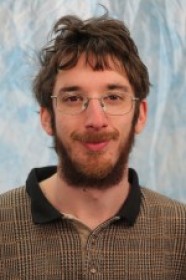
11:00 am to 12:00 am
Event Location: NSH 1507
Abstract: Planning optimal paths for large numbers of robots is computationally expensive. In this thesis, we present a new framework for multirobot path planning called subdimensional expansion, which initially plans for each robot individually, and then coordinates motion among the robots as needed. More specifically, subdimensional expansion initially creates a one-dimensional search space embedded in the joint configuration space of the multirobot system. When the search space is found to be blocked during planning by a robot-robot collision, the dimensionality of the search space is locally increased to ensure that an alternative path can be found. As a result, robots are only coordinated when necessary, which reduces the computational cost of finding a path. Subdimensional expansion is a flexible framework that can be used with multiple planning algorithms. For discrete planning problems, subdimensional expansion can be combined with A* to produce the M* algorithm, a complete and optimal multirobot path planning problem. When the configuration space of individual robots is too large to be explored effectively with A*, subdimensional expansion can be combined with probabilistic planning algorithms to produce sRRT and sPRM.
M* is then extended to solve variants of the multirobot path planning algorithm. We present the Constraint Manifold Subsearch (CMS) algorithm to solve problems where robots must dynamically form and dissolve teams with other robots to perform cooperative tasks. Uncertainty M* (UM*) is a variant of M* that handles systems with probabilistic dynamics. Finally, we apply M* to multirobot sequential composition. Results are validated with extensive simulations and experiments on multiple physical robots.
Committee:Howie Choset, Chair
Manuela Veloso
Maxim Likhachev
Sven Koenig, University of Southern California
Vijay Kumar, University of Pennsylvania
